Who invented the bicycle and when?

If today it is hardly possible to find out who invented the wheel, then the author of the bicycle will not be anonymous. Although this question does not deserve an unambiguous answer: it is worth mentioning the prerequisites for the invention of a vehicle that does not lose popularity, as well as those whose names can definitely be associated with a bicycle.


Prerequisites
At the time of Alexander the Great, according to ancient sources, wheeled vehicles already existed, which were set in motion by muscular power. They could look a little different than the bicycles we are used to today, but still, much in the design made them related to this transport. For example, the hamaxicon is the carriage of Dionysius, the ruler of Syracuse. In antiquity, there were other variations of the carriage, which we can consider akin to the bicycle. But the ancient technologists were still far from the ingenious simplicity of the design.

The next name, without which the history of the bicycle cannot go further, is - the great and incomprehensible Leonardo da Vinci... And just one piece of evidence - a modest drawing, found in 1974 in the archives of the University of Milan, gave reason to consider the legendary Italian as the "father" of the bicycle.
A drawing of the device, which no longer raises doubts about its resemblance to a bicycle, was found on the back of Leonardo's drawing. But even this seductive theory is today considered a falsification and nothing more: they say, to a couple of circles, really drawn by da Vinci, our contemporaries have already completed the body.
It remains only to say that Leonardo, being a man ahead of his time, could have come up with a bicycle. But there is still no real evidence of this.
Nikolai Pevzner considers Count de Sivrac to be the inventor of the bicycle, however, there are so many hoaxes and inconsistencies in this story that it also does not claim to be authentic.

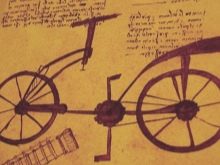

History of invention
It will not work to name just one name, linking it with the invention of the bicycle. There are several masters, the appearance of whose works led to the creation of the famous transport. Let's talk about each of them briefly.
- Karl von Drez. The famous baron, professor of mechanics and engineering, invented the first two-wheeled scooter without pedals on a wooden frame. The invention also had a steering wheel. They called the device a "walking car" or a trolley. But do not confuse the design of the baron and the modern trolley - the name is the same, the principles of operation are different. Nevertheless, many historians claim that it was the German professor who invented the first bicycle in 1817. A year later, the enterprising Dennis Johnson improved this model.


- Kirkpatrick Macmillan. And this is already a simple (although is it appropriate adjective to the inventor) blacksmith, who attached pedals and a lowered saddle to the trolley. It happened around 1840. And although Macmillan's design most of all resembles modern bicycles, for its age and its time it was too unusual a technique. The blacksmith, without knowing it, was ahead of his time. It is a pity, because he could have won a completely different fame, if his contemporaries would have appreciated his invention.

- Pierre Lallemand. Pierre, on the other hand, found himself more precisely in time and in consumer demand. A pram manufacturer succeeded in patenting a pedaled bicycle in 1862 (or 1863), and the device became known as the dandy horse. And a couple of years later, the Olivie brothers, in collaboration with the coachmaker Pierre Michaud, launched the production of the Lallemand bicycle on an industrial scale.



- John Starley. To him we owe the emergence of demand for the first bicycles with the same wheels, chain drive and the driver's seat we are used to today. It happened in 1884-85.


The very same name "bicycle" was invented by Joseph Niepce. But for some time the transport was more successfully called a rover. And there was also the French name "bicyclet", and it existed in Russia for quite a long time, but nowhere else it stuck. In Great Britain there is no "bike", but there is a "bike", which is quickly remembered if you sing one of Queen's hits.
So, the date and day of the bicycle's creation cannot be known, since this design was smoothly outlined from related designs. And the famous version of the origin of the bicycle from Russia also cannot claim to be true. And no matter how much many would like to associate this invention with the name of the peasant Efim Artamonov, the bicycle, kept in the museum of Nizhny Tagil, is nothing more than its late forgery.
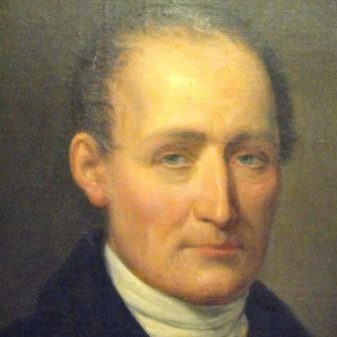

Bicycle evolution
Who was the first, you can’t say for sure. If we draw a parallel with mountaineering, then, although Hillary and Norgay are considered the first ascents of Everest, there are also unrecorded, but quite possibly, ascents that have taken place (the same Mallory). So it is here: there are patents, industrial release, the attested steps of engineers and industrialists. But there are also actions of predecessors, without which the subsequent modernization of transport would be impossible.
The Lalman business continued in 1867, when Cowper invented the spoked wheel. And this step can also be called a breakthrough. History was unfolding in Russia no less interesting.
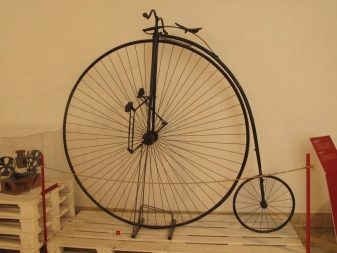
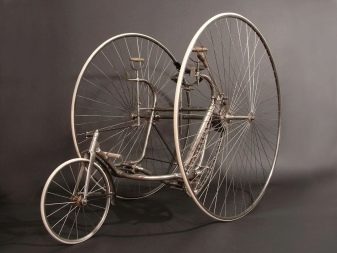
In Russia
If you still believe in the theory of the invention of the bicycle by Efim Artamonov, then it happened in 1800. He made a 40-kilogram structure, which reached 1.5 m in height. The diameter of the front wheel was more than a meter, pedals were attached to it, the rear wheel was half the size of the first and carried out inertial motion. But it was not for nothing that the technique was called "bone shaker": it was just painful to ride it. Despite this, it is believed that Artamonov himself got to Moscow on his invention from Yekaterinburg.And although Efim was given free rein for this miracle of technology, the transport was not given a patent.
We can talk about the real appearance of bicycles in Russia, making a reference to the second half of the 19th century. Then, of course, such a means of transportation was just a luxury, an unaffordable luxury for most. One has only to say that the average salary at that time was about 20 rubles, while a bicycle cost at least 250 rubles (or even all 400). Nevertheless, by 1880, 100 cyclists were registered in St. Petersburg, and among them was the Emperor Alexander II himself, who loved to take a bike ride in Tsarskoe Selo.
Only by the end of the 19th century could cyclists manage transport within the city, and not outside it. But the set of rules for movement was harsh: it was believed that the technique scared horses, therefore it was ordered to get off the bike when meeting with it and even close it with oneself if possible.
And at the beginning of the twentieth century, the first motorcycles began to appear, so interest in bicycles fell. They began to cost less, and although their availability has increased, the evolution of this mode of transport has somewhat stalled.


In other countries
It is easier to trace the evolutionary steps of a bicycle in the world than changes in the technical improvement of transport in Russia.
How the modernization progressed:
- 1878 - Lawson complements the transport with a chain drive;
- 1888 year - Dunlop comes up with rubber tires, and shaking is noticeably reduced, which makes the movement more comfortable;
- 1898 - pedal brakes appear;
- The beginning of the twentieth century - the bike is equipped with a planetary speed switch, after half a century Tullio Campagnolo will come up with a new switch, which is still in demand today;
- 70s of the twentieth century - the first "mountain workers" appear, models made of titanium and carbon fiber;
- 1983 year - the transport receives a bicycle computer and a complicated gearshift system.
At the beginning of the last century, with the advent of the car, the fashion for two-wheelers began to decline. But in the 60s, when the first movement of healthy lifestyle (in the current sense of this term) arose, bicycles again became in demand. And this fashion in the literal sense of the word is only gaining momentum.


Popular myths
Cycling myths are the subject of heated discussions on all forums. And since the fashion for this transport does not subside, they argue again, stumble upon all the same conjectures, not knowing that lovers of two-wheeled transport argued like this before. And even those who are firmly on the car can succumb to the myths about bicycles.
- The true inventor of the bicycle is Ivan Kulibin, but this version is unprofitable for the West, so they are promoting other theories. This is still a myth, although it is necessary to pay tribute to the genius of Kulibin. He really invented the self-propelled carriage, and he did so at the end of the 18th century. Nevertheless, this transport cannot be called a bicycle. The invention remained a curiosity, having not received mass distribution.


- Artamonov traveled 5000 km on the "bone shaker", and his bicycle surprises visitors to the Nizhny Tagil Museum of Local Lore. Modern chemical analysis has assured that the valuable exhibit is a forgery made later than the declared beginning of the 19th century. Therefore, Artamonov cannot be considered a pioneer. More precisely, there is no more confident evidence of his invention.
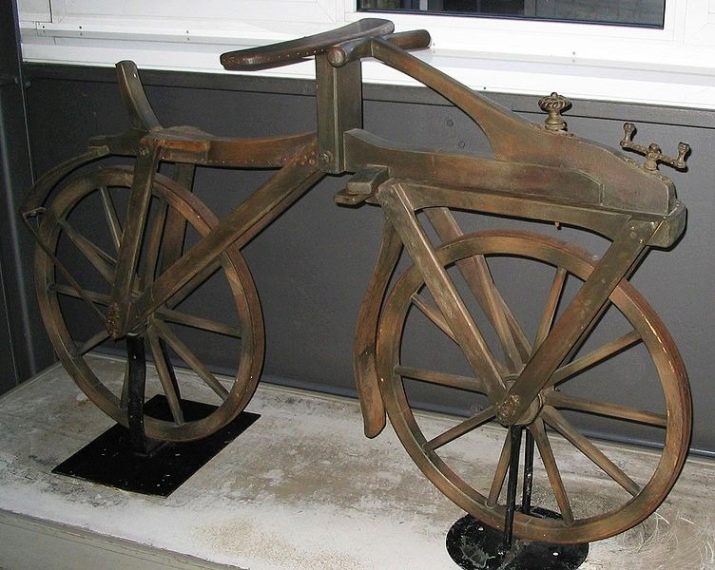
- Count Sivrak's scooter is the first real bicycle in history. As already mentioned, in this version of Pevzner there is more mystification than facts. And the story was invented by the journalist Louis Baudry. There was no graph at all, there was only a prototype of Jean Sivrak, who was engaged in four-wheeled carriages.

And these are only historical myths, and after all, a lot of contradictory information relates to the transport itself, not driving on it. For a long time, information has been circulated that cycling can lead to impotence. It is not known who benefited from this rumor, which has not found scientific confirmation.
The history of the invention of two-wheeled transport is thus interesting, because not all of its pages appeared before a contemporary.Perhaps, soon we will learn something interesting, and it will turn out that before 1817 a certain craftsman had already created a bicycle transport.

Watch a video about the history of the creation and development of the bicycle below.








